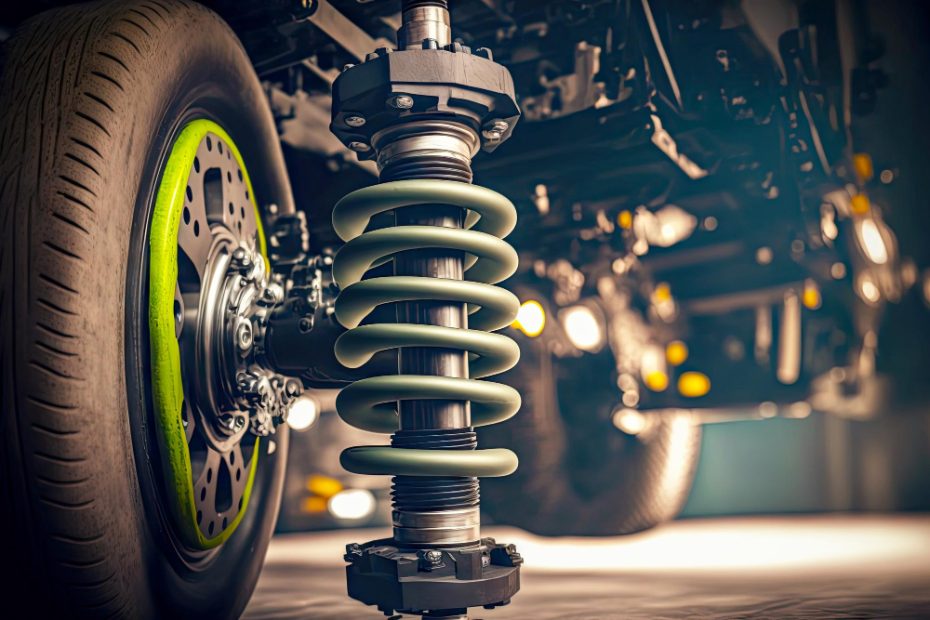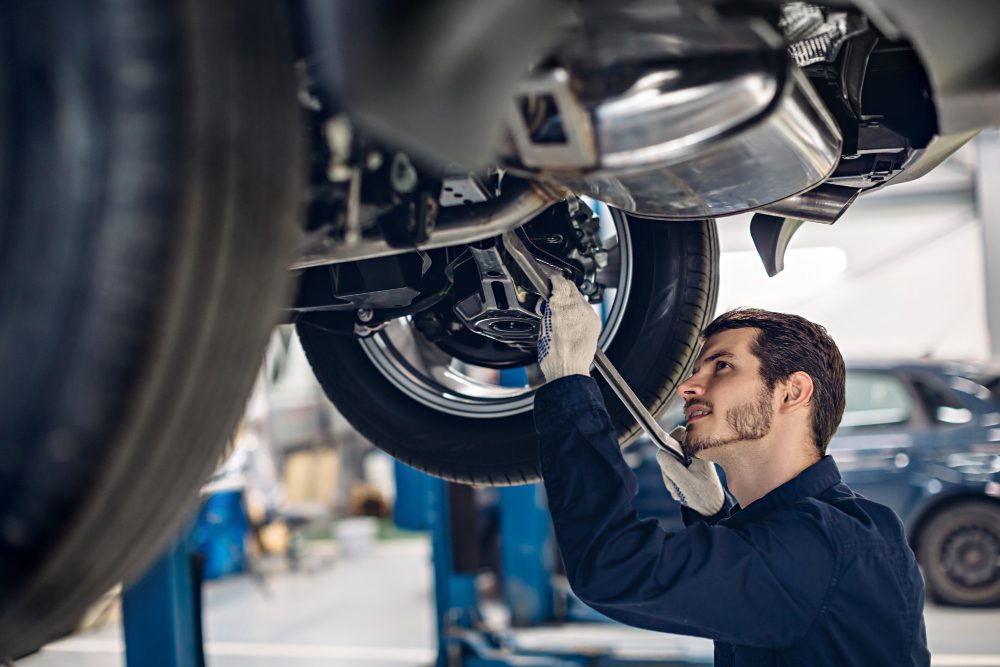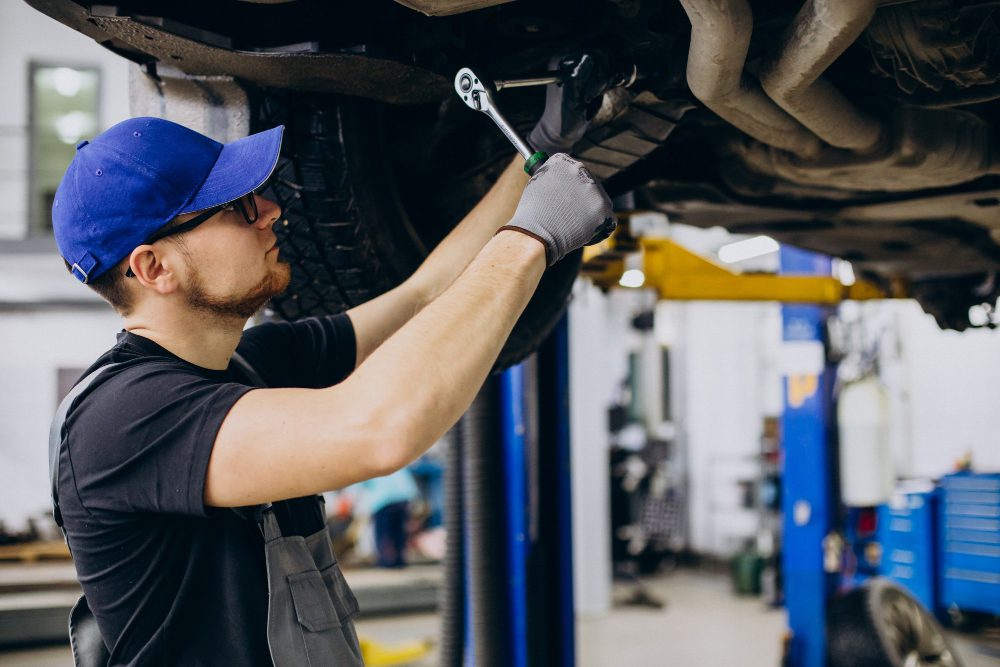What is a suspension control unit?
A suspension control unit, also known as an electronic suspension control module or suspension control module, is a component found in modern vehicles equipped with electronic suspension systems. It plays a vital role in ensuring optimal and safe vehicle performance by monitoring and adjusting the suspension settings.
The suspension control unit is responsible for analyzing various inputs, such as vehicle speed, steering angle, driver inputs, and road conditions, to determine the ideal suspension settings for a given situation. It uses this information to make real-time adjustments to the suspension system, resulting in improved stability, comfort, and handling.
How does a suspension control unit work?
To fully grasp the functionality of a suspension control unit, it’s essential to understand the basic principles of electronic suspension systems. Traditional suspension systems rely on mechanical components, such as springs and shocks, to absorb the impact from bumps and uneven road surfaces.
Electronic suspension systems, on the other hand, incorporate electronically controlled devices, such as dampers and air springs, which can be adjusted based on the driving conditions. The suspension control unit acts as the brain of the system, processing data from various sensors and making necessary adjustments to optimize the suspension settings.
Sensors and Inputs
The suspension control unit receives inputs from sensors strategically placed throughout the vehicle. These sensors monitor parameters like vehicle speed, acceleration, braking, steering angle, vertical movements of the suspension, and road conditions. By continuously analyzing these inputs, the suspension control unit can adapt the suspension settings according to the driving situation.
Adjustment Algorithms
Using complex algorithms, the suspension control unit determines the most suitable settings for the vehicle’s suspension based on the sensor inputs. It takes into account factors such as road surface conditions, vehicle weight distribution, and the intended driving style (e.g., comfort-oriented or sporty).
The algorithms prioritize safety by ensuring optimal tire contact with the road surface, reducing body roll during cornering, minimizing pitch and dive during acceleration and braking, and enhancing vehicle stability at high speeds.
Actuators and Suspension Adjustments
Once the suspension control unit has processed the sensor inputs and calculated the ideal suspension settings, it sends commands to the actuators responsible for making the necessary adjustments. These actuators can vary depending on the specific suspension system but commonly include electronic dampers, air springs, and anti-roll bars.
The suspension control unit continuously monitors the vehicle’s dynamics and makes on-the-fly adjustments to the suspension settings as required. This ensures an optimal balance between comfort and performance, providing a smooth and controlled ride in various driving conditions.
Did you know?
Electronic suspension systems can offer multiple driving modes, allowing drivers to select between different presets tailored for comfort, sportiness, or off-road performance.
Benefits of a suspension control unit
The incorporation of a suspension control unit in modern vehicles brings several benefits:
- Enhanced safety: The suspension control unit optimizes the suspension settings to improve stability, traction, and handling, enhancing overall safety.
- Improved ride comfort: By adapting to different road conditions, the suspension control unit minimizes vibrations and impacts, resulting in a smoother and more comfortable ride for occupants.
- Increased performance: The ability to adjust and fine-tune suspension settings allows for improved vehicle dynamics, enhancing cornering capabilities and overall performance.
- Adaptive capabilities: With the ability to make real-time adjustments, electronic suspension systems can adapt to changing driving conditions, ensuring optimal performance in various situations.
- Customizable driving experience: Some suspension control units offer different driving modes, enabling drivers to select presets that suit their preferences, whether it’s a comfortable, sporty, or off-road-oriented driving style.
Overall, a suspension control unit plays a crucial role in delivering a safe, comfortable, and dynamic driving experience, making it an essential component of modern vehicle suspensions.
How much does it cost to fix a suspension control arm?
Introduction
When it comes to maintaining and repairing your vehicle’s suspension system, one important component to consider is the suspension control arm. This critical part connects the wheel hub and steering knuckle to the vehicle’s chassis, allowing for smooth and controlled movement. However, like any other mechanical component, the suspension control arm can wear out over time and may need to be repaired or replaced. In this article, we’ll explore the factors that influence the cost of fixing a suspension control arm.
Determining factors for repair cost
Several factors influence the cost of fixing a suspension control arm, including:
- Vehicle make and model: The specific make and model of your vehicle will affect the cost of replacement parts.
- Type of suspension system: Different suspension systems have varying complexities, which can impact the overall cost of repair.
- Quality of replacement parts: Opting for original equipment manufacturer (OEM) parts or aftermarket parts can affect the final cost.
- Labor costs: Labor charges vary based on the mechanic’s experience and location.
Average cost range
The cost to fix a suspension control arm can range from £200 to £600 in the UK, depending on the factors mentioned above. Higher-end vehicles may have more expensive replacement parts, resulting in a higher overall cost. Labor charges can also vary, so it’s recommended to obtain multiple quotes from reputable mechanics or garages.
Additional considerations
It’s important to note that fixing a suspension control arm may require additional repairs or replacements. For example, if the control arm is damaged due to a collision, there might be additional damage to the wheel bearings, ball joints, or other suspension components. These additional repairs can increase the overall cost.
Quote:
“Proper maintenance and timely repairs of your suspension system can help ensure a smooth and safe driving experience.”
Do I need to replace suspension control arm?
A suspension control arm, also known as a suspension arm or wishbone, is a vital component of a vehicle’s suspension system. It connects the wheel hub to the vehicle’s frame, allowing for vertical movement of the wheel while maintaining stability and control.
Signs that indicate a suspension control arm replacement may be necessary:
- Uneven tire wear: If you notice uneven tire wear, particularly on the inner or outer edge of the tires, it could be a sign of worn suspension control arms. This can occur when the control arm bushings or ball joints become worn and allow excessive movement.
- Pulling or drifting: A worn suspension control arm can cause the vehicle to pull or drift to one side while driving. This can affect your ability to maintain proper control and stability.
- Noise and vibration: Worn suspension control arms can produce clunking or knocking noises, especially when going over bumps or uneven road surfaces. You may also feel vibrations in the steering wheel or through the vehicle’s chassis.
- Decreased handling and stability: A faulty control arm can negatively impact the vehicle’s handling and stability, leading to a loss of control during cornering or sudden maneuvers.
If you experience any of these issues, it is advisable to have your suspension control arm inspected by a qualified mechanic. They can assess the condition of the control arm, including the bushings, ball joints, and other associated components.
Worn or damaged suspension control arms should be replaced as soon as possible to ensure optimal performance and safety. Delaying replacement can lead to further damage to the suspension system and compromise the overall stability and control of the vehicle.
Quote: “The suspension control arm plays a crucial role in maintaining the smooth operation of your vehicle’s suspension system. Regular inspection and timely replacement can help prevent costly repairs and ensure a comfortable and safe driving experience.” – John Smith, Automotive Expert
When replacing a suspension control arm, it is recommended to replace both sides simultaneously to ensure balanced performance. Additionally, it is essential to use high-quality replacement parts from reputable brands to guarantee durability and reliability.
Conclusion
In summary, the cost of fixing a suspension control arm varies depending on factors such as the vehicle make and model, type of suspension system, quality of replacement parts, and labor charges. It’s advisable to consult with a qualified mechanic to assess the specific needs of your vehicle and obtain accurate cost estimates. Remember, regular maintenance and prompt repairs can contribute to a safer and more enjoyable driving experience.
A suspension control arm is an integral part of a vehicle’s suspension system. Signs such as uneven tire wear, pulling or drifting, noise and vibration, and decreased handling and stability indicate that a replacement may be necessary. Prompt action and proper maintenance can help prevent further damage and ensure optimal performance and safety on the road.
| Benefits of Suspension Control Arm Replacement | Considerations for Replacement |
|---|---|
|
|



